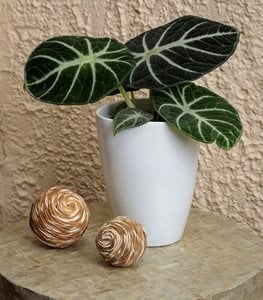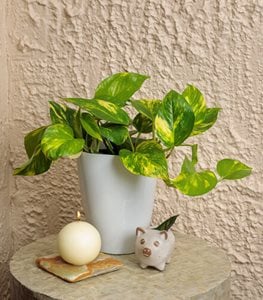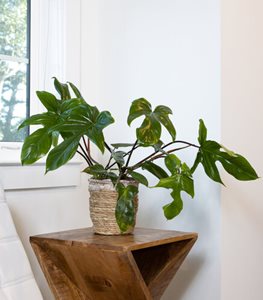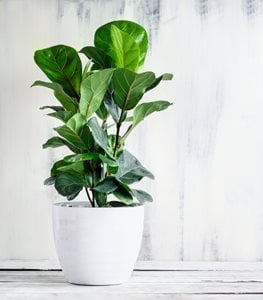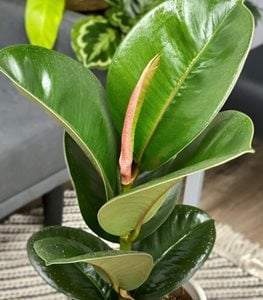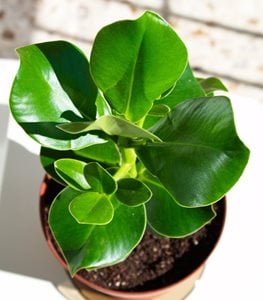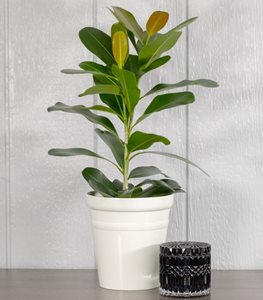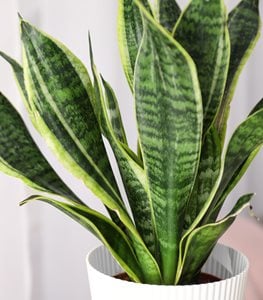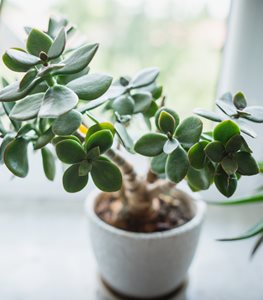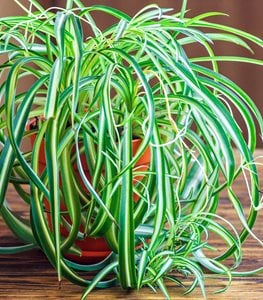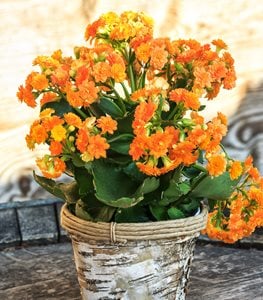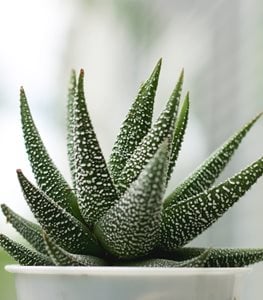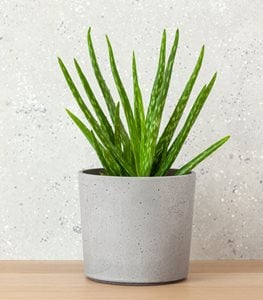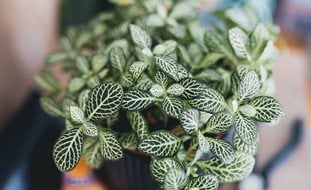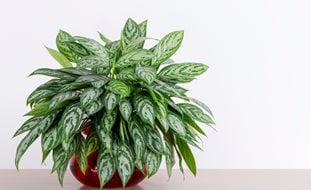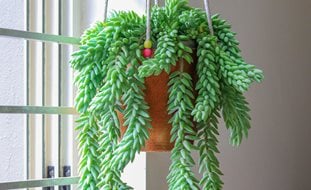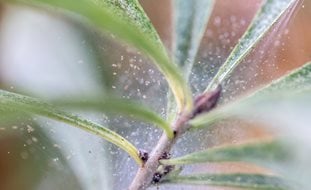14 Best Houseplants for Bright Light
Transform a brightly lit room with these beautiful sun-loving plants.If you’re lucky enough to live in a home that’s flooded with lots of natural light throughout the day, you have the ideal conditions for growing a wide variety of indoor plants. Most houseplants thrive in moderate to bright light, as long as there is no risk of scorched foliage or overheating. The best-lit spots in the home are usually on or near windowsills that receive several hours of sunlight daily, even if it’s only early morning or late afternoon sun. However, most of the plants profiled here will need some protection from strong midday sun in summer.
On this page: Bright-Light Houseplants | Care Tips
On this page:
INDOOR PLANTS FOR BRIGHT LIGHT
ALOCASIA (Alocasia hybrids)
Size: 2 to 6 feet tall and wide, depending on variety
Water: Water regularly during the growing season (spring through fall) to keep the soil evenly moist, but not soggy; less frequently during winter.
Fertilize: Feed with a diluted liquid houseplant fertilizer one to two times per month during spring and summer.
Given the right conditions, these lush and leafy tropical plants can thrive indoors in well-lit areas, making them a bold focal point of any sunny room. In addition to bright light, alocasias also require a humid environment, so keep plants well-hydrated by using a humidifier or misting the leaves regularly. Learn more about growing Alocasia.
POTHOS (Epipremnum aureum)
Size: Vines 6 to 10 feet long
Water: Allow the top inch of soil to dry out between watering.
Fertilize: Light feeder; use a balanced liquid fertilizer every 1 to 3 months when plant is actively growing.
One of the easiest houseplants to grow, this popular tropical vine comes in a variety of foliage colors and patterns and will tolerate both low and medium light conditions. Can be trimmed and kept compact, allowed to trail from hanging baskets, or trained up vertical supports. Learn more about growing pothos.
PHILODENDRON (Philodendron spp.)
Size: Vines to 8 feet long
Water: Prefers evenly moist soil, but not soggy. Water if top inch of soil is dry.
Fertilize: Apply a water-soluble houseplant fertilizer from spring through fall.
Another very easy-to-grow houseplant, similar to pothos. Tolerates low light, but will grow faster in medium to bright light. Foliage comes in a variety of sizes, shapes, and colors. Philodendrons can also be grown outdoors in mild climates. Learn more about growing philodenron plants.
FIDDLE-LEAF FIG (Ficus lyrata)
Size: Up to 10 feet tall
Water: From spring to fall, water when the top inch of soil feels dry, more sparingly in winter.
Fertilize: Apply a high-nitrogen fertilizer that includes micronutrients monthly from spring through fall. Don't feed during winter months.
Fiddle-leaf figs instantly give any room a jungle-like vibe. They grow very slowly, but can eventually reach the ceiling. With a reputation for being finicky, this cold-sensitive rainforest native needs just the right conditions to thrive indoors and will not tolerate cold drafts. Prefers some direct sunlight from an east- or west-facing window. Learn more about how to grow fiddle-leaf figs.
RUBBER PLANT (Ficus elastica)
Size: 3 to 4 feet tall when grown indoors
Water: Allow the top 2 to 3 inches of soil to dry out before watering, and never allow to sit in standing water.
Fertilize: Apply half-strength houseplant fertilizer once a month while the plant is actively growing.
Prized for its large, glossy leaves, which are often suffused with shades of red or purple, rubber plant exhibits the best leaf color when grown in the bright light of an east- or west-facing window. Like fiddle-leaf fig, this jungle native is sensitive to the cold, so avoid room temperatures below 65° F. Learn more about how to grow rubber plants.
AUTOGRAPH TREE (Clusia rosea)
Size: Rarely taller than 3 to 4 feet indoors
Water: Keep soil lightly moist, not soggy.
Fertilize: Feed once a month with a water-soluble plant fertilizer diluted to half strength in the growing season; withhold fertilizer in winter.
If you've never heard of it, Clusia rosea is a trendy, easy-to-care-for houseplant with beautiful leathery leaves that you can actually carve your name into. Autograph tree plants prefer medium-to-bright indirect light; avoid direct sunlight, which can scorch the leaves. Learn more about how to grow autograph tree plants.
CHINESE FIG (Ficus microcarpa)
Size: 2 to 3 feet tall
Water: Avoid letting the soil dry out completely. Water when the top 1 to 2 inches of soil are dry.
Fertilize: When plant is actively growing, feed once a month with houseplant fertilizer at half-strength.
A delightful houseplant with an upright, tree-like demeanor, smooth, shiny, medium green leaves, and is excellent for bonsai sculpting.
See more on Chandelier™ Celebrate™ Chinese fig from Proven Winners
TRADESCANTIA (Tradescantia spp.)
Size: 2 to 4 inches tall, trails to 3 feet
Water: Tradescantias prefer moist soil; avoid overwatering to prevent root rot.
Fertilize: Use a balanced liquide fertilizer monthly for houseplants.
Also known as spiderwort, this easy-to-grow vine features colorful striped foliage and a trailing habit, making a pretty display when allowed to spill from a hanging pot or basket. Will tolerate a range of light conditions from medium light to full sun. However, insufficient light will result in spindly plants that are not as full. Learn more about growing Tradescantia.
See more on Feeling Flirty™ purple tradescantia from Proven Winners
Proven Winners® leafjoy® Atrium® Collection
High-light plants for bright spaces.
These plants enjoy basking in the sun in bright, airy, south- or west-facing rooms.
See the enitre Atrium™ Collection of bright-light houseplants.
SNAKE PLANT (Sansevieria spp.)
Size: 6 to 20 inches tall
Water: Allow the top inch of soil to dry completely before watering. Snake plants store water, so it's almost impossible to underwater them.
Fertilize: Not necessary, but an occasional dose of all-purpose houseplant food during the spring and summer will encourage more vigorous growth.
Also called mother-in-law's tongue, this hardy houseplant is almost impossible to kill. Although it prefers bright light, it will also persevere through dim lighting, temperature fluctuations, and lapses in watering. Learn more about growing snake plants.
JADE PLANT (Crassula ovata)
Size: Dwarf varieties, 12 to 18 inches tall
Water: Allow the soil to dry out between waterings, and water only sparingly in the winter months. Too much moisture can cause stem and root rot.
Fertilize: Only occasionally with a diluted liquid fertilizer from spring through early fall.
Jade plant can live for decades and is easy to propagate from leaf or stem cuttings. When grown in direct sunlight, the fleshy leaves of this treelike succulent will often become tinged in red. Learn more about how to grow jade plants.
SPIDER PLANT (Chlorophytum comosum)
Size: 6 to 8 inches tall, with cascading runners
Water: Water generously when the soil feels dry; more sparingly in winter.
Fertilize: Monthly during the active growing season, early spring to late autumn.
One of the easiest plants to propagate. Simply cut the baby spiders from their runners and place in moist potting soil. You can also stick them in a glass of water for a week or so until roots form and then pot in fresh soil. Learn more about how to grow spider plants.
KALANCHOE (Kalanchoe blossfeldiana)
Size: Up to 12 inches tall
Water: Water every week or so when the soil feels dry.
Fertilize: Once or twice a year, in early spring and late autumn. Plants in bloom do not need fertilizing.
Kalanchoes are popular succulents grown for both their flowers and foliage. When in bloom, their flowers can last for several weeks. To encourage reblooming, pinch off spent flowers and give the plant a rest period with no fertilizing and minimal watering. After a month or so, new buds should begin to form.
HAWORTHIA (Haworthia spp.)
Size: 3 to 5 inches tall
Water: Allow the soil to dry out completely between waterings.
Fertilize: Infrequently, with a slow-release product.
Ideal for narrow windowsills, this slow-growing succulent remains neat and compact. In summer, creamy white flowers bloom on long stems. Haworthias need almost no care and rarely need repotting.
ALOE VERA (Aloe vera)
Size: 12 to 24 inches tall
Water: Water deeply, but not too often, allowing the soil to dry to a depth of 1 to 2 inches between watering.
Fertilize: Aloes generally don't require fertilizing.
Although traditionally grown for their fleshy foliage, aloe vera plants may bloom if they get enough light. To encourage flowering, place your plant in the bright light of a south-facing window or move it outdoors once temperatures warm up in summer. Aloes grown in low light often become leggy. Learn more about how to grow aloe plants.
4 CARE TIPS FOR BRIGHT-LIGHT HOUSEPLANTS
1. Don't overdo it. Unobstructed south-facing windows are ideal for desert dwellers like cacti and succulents, but plants with light-sensitive foliage, such as pothos and alocasia, may develop scorched or discolored leaves if not protected from exposure to direct sunlight. Use sheer curtains or blinds, especially during the summer months, or move your plants to an east- or west-facing window.
2. Consider seasonal light changes. Keep in mind that shade from outdoor trees and window awnings can block the light your indoor plants receive during certain times of the year. If your plants are suffering, try repositioning them to a brighter spot in your home, if only for a couple of hours a day. During the shorter days of winter, consider moving plants to a sunnier south-facing window.
3. Dust the leaves regularly. Plants, especially those with large leaves, can collect dust, which will inhibit their ability to absorb light. Use gentle dusting tools such as damp microfiber cloths, baby wipes or feather dusters to keep them dust-free.
4. How can you tell whether your plant is getting enough light? Just watch its behavior. If new growth is spindly, pale, and seems to stretch toward the light, those are sure signs your plant is craving more sun. If you have a flowering plant, it may stop producing blooms if light levels are too low.
